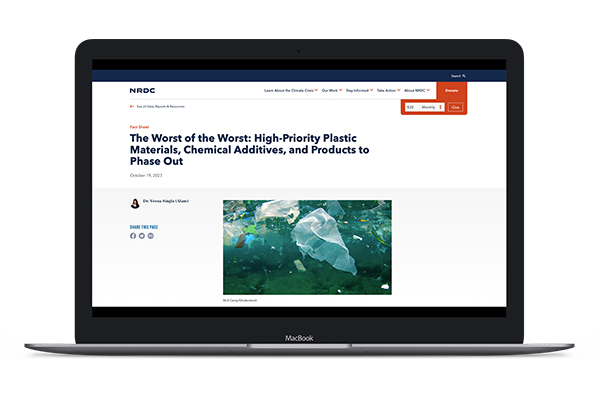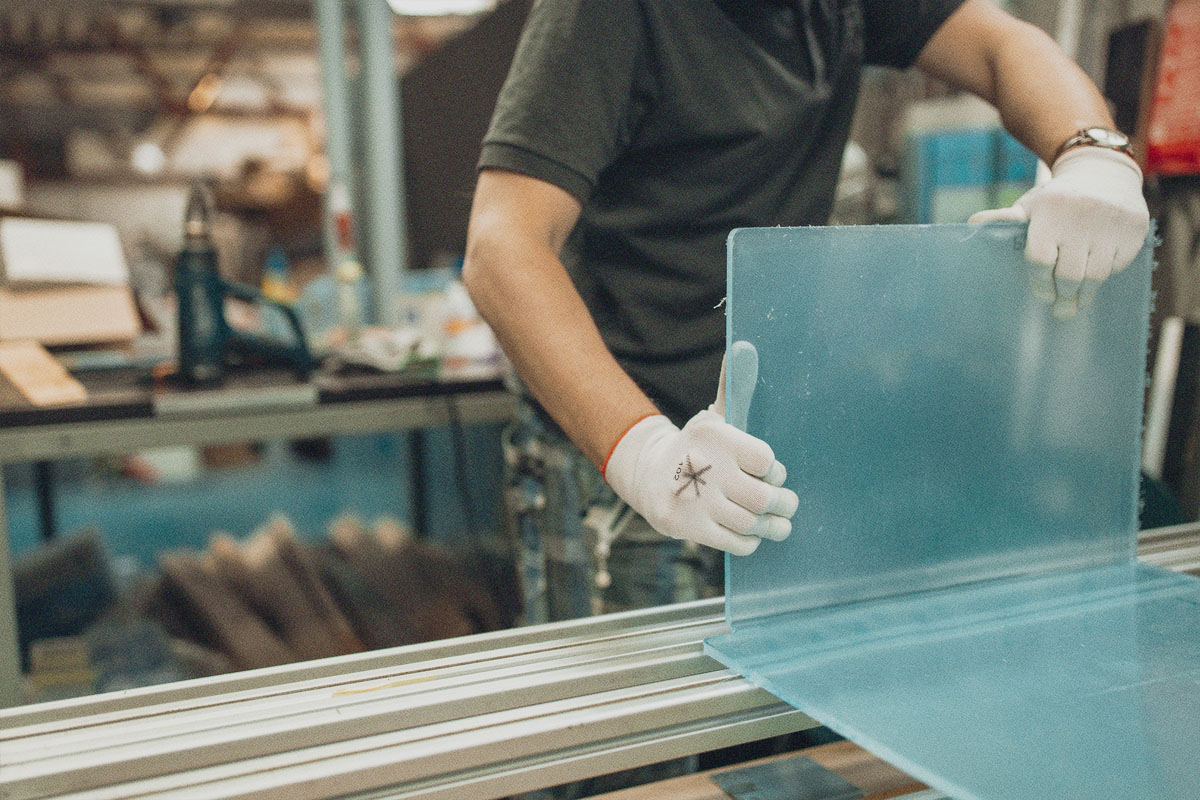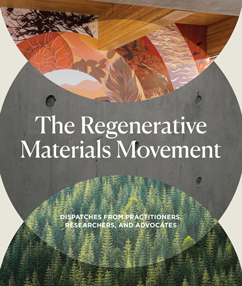 READ HABITABLE’S NEW REPORT
READ HABITABLE’S NEW REPORTThe Planetary Health Alliance is a global consortium of over 400 organizations from 60+ countries dedicated to studying and addressing the effects of global environmental change on human health.

For over three decades, CEHN has been a leading advocate for evidence-based child-protective policy, preventive research, and education on children’s environmental health, collaborating with diverse stakeholders to promote a healthier future for children.

Project TENDR is an alliance of scientists, health professionals, and advocates dedicated to protecting children from toxic chemicals and pollutants that harm brain development, focusing on ending disproportionate impacts on low-income and minority families.

The new Global Framework on Chemicals envisions a planet free of harm from chemicals and waste, covering the life cycle of chemicals, promoting initiatives for their sound management, and involving stakeholders from various sectors and levels to ensure a safe, healthy, and sustainable future.

This podcast conversation explores the intersection of climate change and chemical pollution.
Highlighting opportunities to address both crises simultaneously while improving public health, equity, and economic vitality, featuring experts Dr. Elizabeth Sawin and Beverley Thorpe.

In this article, journalists investigate the American Chemistry Council’s promotion of chemical recycling, contrasting it with environmentalists’ concerns and highlighting issues found at Braven Environmental’s facility, suggesting that chemical recycling may not be as environmentally friendly or commercially viable as claimed.
This fact sheet highlights the urgent need to phase out the production and use of high-priority plastic polymers, chemical additives, and products that pose significant hazards to human health and the environment, in order to address the global plastics crisis.

Who do you think would win at the sustainability tug-o-war? Team safer materials or team low-carbon products?
Healthy Building Network (HBN) has often heard these two issues framed as a competition–a false choice. Instead, we know that these two powerhouses must work together for optimal results.
In 2022, HBN and Perkins & Will published a study highlighting building products that can do just that: optimize material health and lower their carbon footprint. This study identified key drivers and paths towards low embodied carbon and safer materials as well as when to consider and optimize both at the same time. To illustrate this point, we plotted an actionable path for project teams using flooring products as an example.
Team Low-Carbon Products: The embodied carbon of building materials contribute a whopping 11% to global carbon emissions.1 Most of these emissions happen before that product even gets installed. Additionally, the poorest countries and regions are those most impacted in terms of damage and loss of life by the effects of climate change.2 “That 11% might sound small compared with the impact of operational energy (28%), but for new construction, embodied carbon matters just as much as energy efficiency and renewables. That’s because the emissions we produce between now and 2050 will determine whether we meet the goals of the 2015 Paris climate accord and prevent the worst effects of climate change,” explains a BuildingGreen report.
Team Safer Materials: We spend 90% of our time indoors, and hundreds of industrial chemicals are found in our indoor spaces— in the dust, in the air we breathe, and in our bodies.3 The health impact of building materials are not limited to their time in use in the building, they often occur during manufacturing, installation, and at the product’s end of life. People living in close proximity to industrial facilities experience persistently worse air quality than average and exposure to industrial pollutants disproportionately impacts people of color.4 Another report suggests man-made pollution has exceeded the Earth’s safe operating boundaries.5 “Transgressing a boundary increases the risk that human activities could inadvertently drive the Earth System into a much less hospitable state, damaging efforts to reduce poverty and leading to a deterioration of human wellbeing in many parts of the world, including wealthy countries.” Professor Will Steffen, researcher at the Centre and the Australian National University, Canberra.6


Reducing toxic chemical use and the emissions associated with building materials NOW is a vital sustainability strategy for any project team.
The Research:
To identify the key drivers of embodied carbon and the key opportunities to reduce embodied carbon for each product type we read Environmental Product Declarations (EPDs), reviewed literature and data compilations, and conducted manufacturer interviews. The hazards associated with flooring products, the chemicals used to make those materials and the hazards associated with the chemicals used to install those products were collected using InformedTM product guidance and hazard data in the Pharos database.
Embodied Carbon:
Our research concluded that flooring products’ embodied carbon impacts are mostly associated with the raw material supply. The biggest opportunities to reduce embodied carbon in flooring comes from choosing a different product type that uses less impactful raw materials as well as products with longer service life. Carpet was consistently the most impactful product type due in part to its short service life. Plant-based flooring products, such as wood and natural cork, were consistently the least impactful.
Material Health:
Not surprisingly, the biggest opportunities to avoid chemicals of concern in flooring come from choosing a product type with typically fewer chemicals of concern. Products made from plastic, such as vinyl, nylon, or polyurethane tend to use more hazardous chemicals during manufacturing, installation, use, and end of life, than mineral or plant-based products. Selecting a product that is yellow or above in InformedTM color ranking Flooring Guidance, such as wood or linoleum, or even a non-vinyl resilient flooring will minimize the use of hazardous chemicals. Products in the red zone such as vinyl and carpet, should be avoided.
Conclusion:
When we looked at the opportunities to improve embodied carbon and improve material health for flooring we found that they were largely complementary.
- Use flooring with a long service life. Avoid products with a short service life, like carpet, and select a product with a long service life, like wood.
- Choose biobased product types. Linoleum, wood, and cork are all flooring product types that were identified as both resulting in lower embodied carbon and safer in terms of material health.
- If you must use carpet, avoid use of virgin nylon carpet product types. While carpet generally can contain more chemicals of concern than other product types, carpet made with virgin nylon as a generic product type was identified as having the highest embodied carbon within the flooring category.
- Use circular and safe materials. Use recycled content from known sources. Prefer products that have been tested for these chemicals and have below detectable levels or below levels that would be found in virgin resin content for these materials.
These findings highlight the importance of pre-emptive design. Parallel to the way we conduct early modeling for energy or water use, the industry needs to model for embodied carbon and material health. A materials modeling approach–where the entire team is engaged early – before design development or construction development – will enable educated decisions before the design is set. Use HBN’s Embodied Carbon and Material health in Flooring and Drywall report and tools like Informed™ and the Carbon Smart Materials Palette to select typically healthier, low-carbon building product options.
SOURCES
- Architecture 2030. “Why the Building Sector?” https://architecture2030.org/why-the-building-sector/
- United Nations. “The Sustainability Development Goals Report 2019”. 2019. https://unstats.un.org/sdgs/report/2019/The-Sustainable-Development-Goals-Report-2019.pdf
- Goodman, S. “Tests find more than 200 chemicals in newborn umbilical cord blood”. Scientific American. December 2, 2009. https://www.scientificamerican.com/article/newborn-babies-chemicals-exposure-bpa/ Environmental Science Technology. “Consumer Product Chemicals in Indoor Dust: A Quantitative Meta-Analysis of U.S. Studies”. 2016. 50, 19, 10661-10672. https://pubs.acs.org/doi/full/10.1021/acs.est.6b02023
- Chandra, A. et al. “Building a National culture of health. Background, action framework, measures, and next steps. RAND Corporation. 2016. https://www.rand.org/pubs/research_reports/RR1199.html
- Persson, L. Et al. “Outside the safe operating space of the planetary boundary for novel entities” Environmental Science and Technology. 56. 5. 1510-1521. 2022. https://pubs.acs.org/doi/10.1021/acs.est.1c04158
- United Nations. “Scientists Say Planetary Boundaries Crossed.” 2015. https://unfccc.int/news/scientists-say-planetary-boundaries-crossed
We have been picking on plastics a lot recently (see articles: Addressing the Plastic Crisis: Why Vinyl Has to Go and The Illusion of Plastic Recycling: Neither Just Nor Circular). This is because we believe that typically the best way to avoid hazardous chemicals is to avoid plastic altogether. With this said, we recognize plastics in buildings are currently ubiquitous (see article: Our Plastic Buildings: A New Driver of Fossil Fuel Demand).
So, let’s consider what would need to happen for plastic building products to be considered truly sustainable. Can the plastics industry do better? What are the key opportunities today to do so, and what global policy tools could promote these opportunities? These are among the key questions HBN explored in the development of a pair of case studies for the international Organization for Economic Co-operation and Development (OECD) as part of the Inter-Organization Programme for the Sound Management of Chemicals (IOMC).
Before we jump into the case study findings, first, let’s define plastics. For the purposes of this article, we define plastics to be any polymeric material, fossil fuel based or bio-based. The case studies focused on durable plastic goods, using building materials as an example.
The case studies explored both plastic flooring and plastic insulation with the goal of increasing awareness of environmental and human health impacts of plastic product production at each stage of the lifecycle and proposing policy interventions that can help move the industry toward more sustainable plastics products in general.

What would be defined as a sustainable plastic?
In the report, we created a framework for evaluating what a truly sustainable plastic product would look like. These goals are lofty, and currently no existing plastic building materials meet these goals. However, they provide a pathway towards truly sustainable products.
To be considered a sustainable plastic, a product would have to enhance human and environmental health and safety across the entire product life cycle. It would have to be managed within a sustainable materials management system, and would have to meet the following goals:
- Must be inherently low hazard.
- Hazardous substances are eliminated.
- Transparency in terms of content and emissions exists at every step of the supply chain.
- Full hazard assessments are available on all chemicals.
- Must have a confirmed commercial afterlife.
- Products designed for durability, reclamation, reuse, and recycling.
- Infrastructure exists to support reclamation, reuse, and recycling.
- Materials can undergo multiple cycles of recycling.
- Must generate no waste.
- Manufacturing scrap is eliminated at every step of the production process.
- Scrap from installation is eliminated.
- Must use rapidly renewable resources or waste-derived materials.
Trade-offs examples
The case study explores trade-offs that exist between different material choices.
For a flooring example, a product that is designed to use adhesive to install is typically thinner than one that uses a click tile system to install. These thinner products use less material per square foot and therefore have less chemical impacts associated with manufacturing and less waste at the end of life. However, adhesives may add hazardous substances to the product installation stage. By moving from a click tile product to a glue down product, chemical exposure burdens shift from manufacturing and end of life to the installation stage and use phase.
For an insulation example, a product that is designed to chemically react at the build site, such as spray polyurethane foam (SPF), can allow the insulation to form an air-sealed custom fit. However, SPF is not recyclable, and adherence of that insulation to surrounding materials may also make those materials more difficult to reclaim or recycle. Moving from XPS, EPS or polyiso to SPF may reduce the ability of other surrounding materials to “have a commercial afterlife” in the pursuit of an added performance feature.

Building awareness around these trade-offs enables stakeholders to make informed choices.
Back to reality
Now, back to reality after crafting the characteristics of a theoretical sustainable plastic. The bottom line is that there are no sustainable plastics that exist today, and we are a long way off from that day. Today, project teams need to prioritize which sustainability goals are most important and how to deal with real and significant gaps in understanding and/or data.
The case studies compared only product types made of plastic, but in reality, project teams have a wider variety of materials to choose from in any given product category. HBN’s Product Guidance considers the most commonly used product types within a product category and ranks those product types relative to one another from a chemical hazard perspective. Product types made of plant-based materials or minerals tend to rank higher than plastic products. You can apply the same sustainability goals proposed in this article to non-plastic products.
In project design, the biggest leaps towards more sustainable products from a chemicals perspective often requires consideration of vastly different materials versus making incremental improvements in chemistry for a particular product type. For example, this could mean moving from vinyl to linoleum flooring versus attempting to select the least bad vinyl option.
Check out the full flooring and insulation case studies for examples of how to use these goals to consider and choose the variety of plastic product types you will inevitably be specifying for your next project. Alternatively, challenge yourself to skip the plastics whenever possible. Even selecting one non-plastic product is cause for celebration. Make the swap!
This chapter in ILFI’s book The Regenerative Materials Economy explores the often overlooked life cycle chemical and environmental justice impacts of building materials, focusing on insulation materials like fiberglass and spray polyurethane foam (SPF).
Through a framework rooted in green chemistry and environmental justice principles, authors Rebecca Stamm of HBN and Veena Singla of NRDC analyze manufacturing realities, environmental justice concerns, and environmental health impacts, providing recommendations to improve the industry’s sustainability and reduce the negative effects on marginalized communities.


 Health
Health Pollution
Pollution Climate Change
Climate Change Equity
Equity